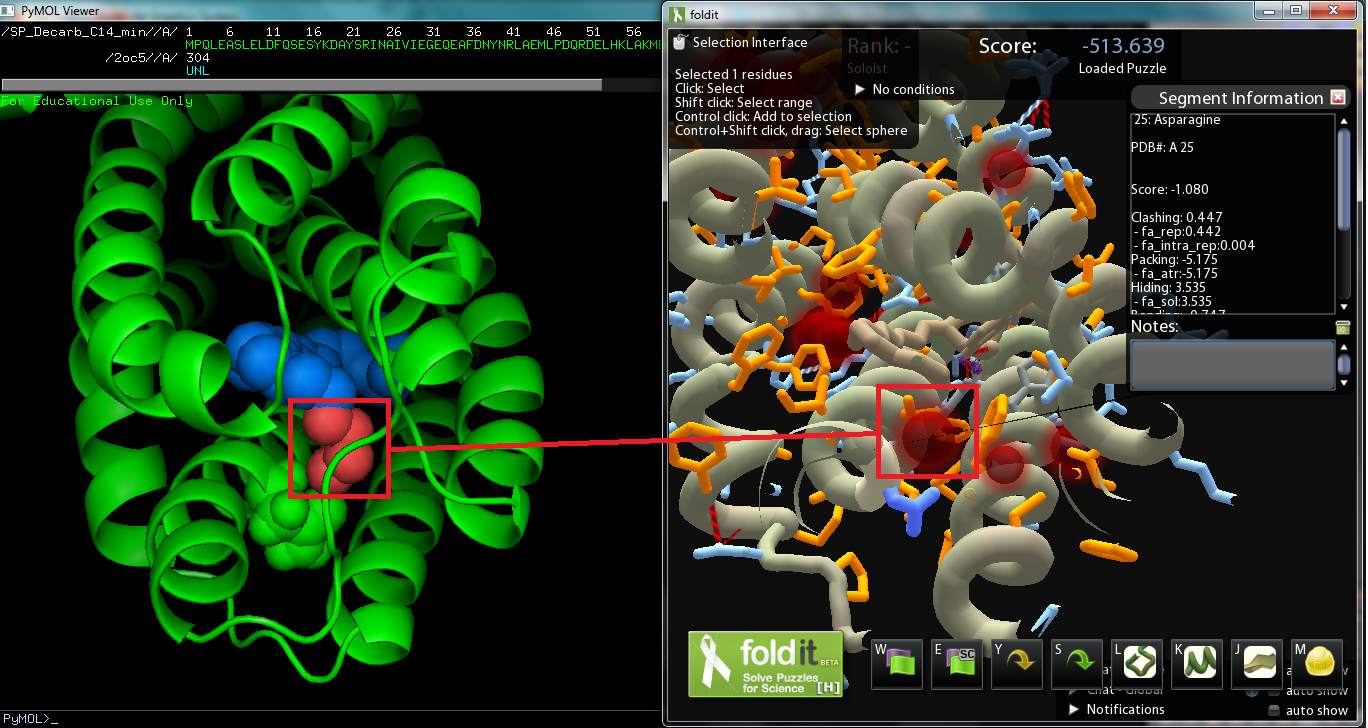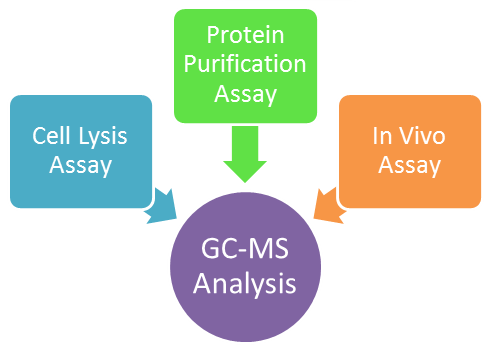Team:Washington/Alkanes/Future/DecarbDesign
From 2011.igem.org
DECARBONYLASE REDESIGN
Contents |
Background
The objective of this subproject was to modify the ADC protein so that we can synthesize a wider variety of alkanes; in other words, mutate the protein so that it works better on a range of saturated fatty aldehydes. The protein was originally surmised to work best on C18 aldehydes, as the crystal structure derived Pymol model of the protein revealed a C18 carboxylic acid bounded to the metal center (though the vector with AAR and ADC proved to work best on C16 aldehydes while less on C14 and C18 aldehydes). Consequently, we decided to strive to modify ADC to work on shorter chain aldehydes, specifically tetradecanal. The substrate on the original Pymol file was modified to model C14 aldehyde, and then the file was converted to a Fold-it puzzle for human interaction. We decided to avoid changing amino acids near the active site, which binds to the aldehyde group, as we wanted to maintain the basic chemistry, decarbonylation (or perhaps deformylation). There was also the issue of the Fold-it modeling 122-Tyrosine hydrogen bonded to the substrate and another side chain, and according to Fold-it's notifications, serine, threonine, and tyrosine cannot "have more than 1 donor and 2 acceptors." As the amino acid we will change will be around the alkyl chain, there are no hydrogen bonds to be made(hydrogen bonds show up on the interface). If we are to make changes so that the protein binds more favorably to C14 aldehydes, we must improve dispersion intermolecular interactions by increasing the surface interaction between protein and substrate. Comparison with the original Pymol file showed that the removal of the four carbon atoms created a spatial “void area.” Targeting the void area with minimal interference or clashes between atoms, the most promising mutation sites are on adjacent sections of two helices positioned opposite of the substrate’s carbon end. The adjacent sections take up amino acids 21 to 25 and 67 to 71, the former of which, being closer, shows promise as a site to mutate to fill in the void area and avoid interferences.
Methods
Several aldehyde decarbonylase (ADC) mutants were designed using Fold-It, a computational design program. These ADC mutants were made using the Kunkel Mutagenesis method. Also, the sequences of these mutants were later verified to carry the correct mutations. After creating several ADC mutants, three different types of assays were developed and the mutants were later tested and analyzed using Gas chromatography–mass spectrometry (GC-MS) to see if our mutants can produce high abundance of C13 alkanes. The three different assays that were set up are: cell lysis assay, protein purification assay, and in vivo assay.
In Vitro Assays
- Cell Lysis Assay
One ADC colony was picked and grown in the 37°C shaker. Once OD600 has reached the value of 0.8, colony culture was induced with IPTG. Induced colony culture was shaken in the 37°C shaker for three more hours and then cell pellet was collected by spinning it down. This cell pellet was resuspended in a solution that consisted of sodium phosphate buffer, protease inhibitor, DNAse, lysozyme and 10% triton. Either sonication, bugbuster and triton, was added to the resuspended cell culture as a cell lysing buffer. This mixture of cell solution and cell lysing buffer was then mixed at room temperature for 30 min and then it was centrifuged. Liquid in the top layer was transferred in to an eppendorf tube and ethyl acetate was added to distinguish the organic layer which contains alkanes from aqueous layer. Later, we found out that triton as cell lysis buffer works the best and we added other cofactors such as feredoxin, feredoxin reductase and NADPH, and aldehyde.
- Protein Purification Assay
Use higher concentrations of protein: 1. grow up 10X more protein and purifying
In Vivo Assay
In vivo (in the cell, start from glucose) : cells’ membrane will keep proteins in smaller volume, but the main point is that we can compare with native ADC cell results from other groups (the cells probably will make more alcohol anyway).
We grow up cells to express 10 times more ADC proteins (IN CELLS) and then we purify the proteins by lysing the cells and binding the target ADC proteins to the BioRad columns and then eluting them out, resulting in pure ADC proteins.
Lei's construct: RED-PSB1C3-High consititutive (Acyl-ACP Reductase in PSB1C3 high consititutive vector) We made: 1c3-const-RED-rbs-mutant decarb
Current Status
- Discuss mutations made and construct submitted
- Show protein gel of expression
- Discuss in vitro assay and how it hasn't worked yet (even for WT)
- Discuss plan for future testing
Parts Submitted
- Plasmids with mutations
- ADC_AB4
- 1C2
- 7A5
- 8BE
- 9A1
- 10B5
 "
"




